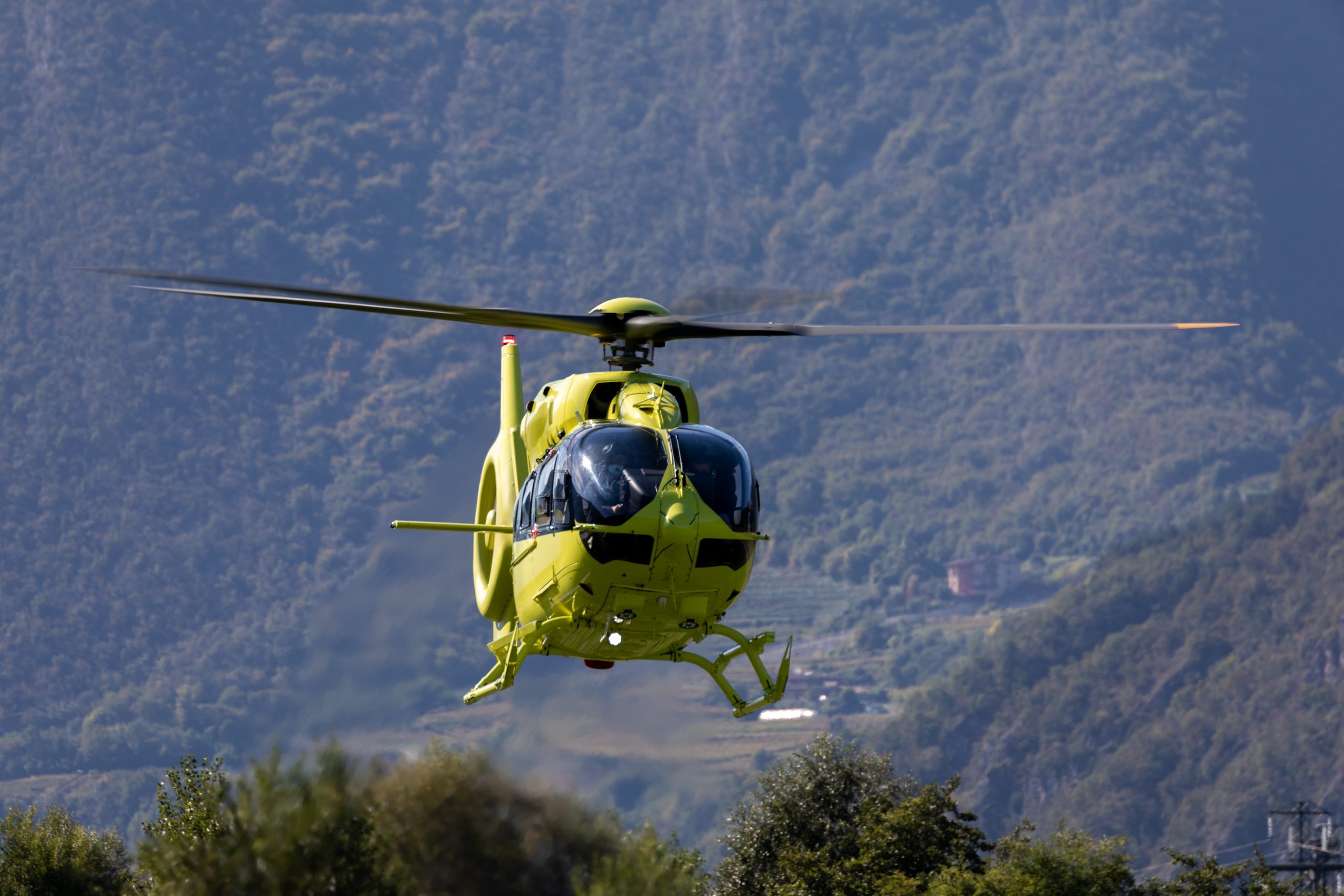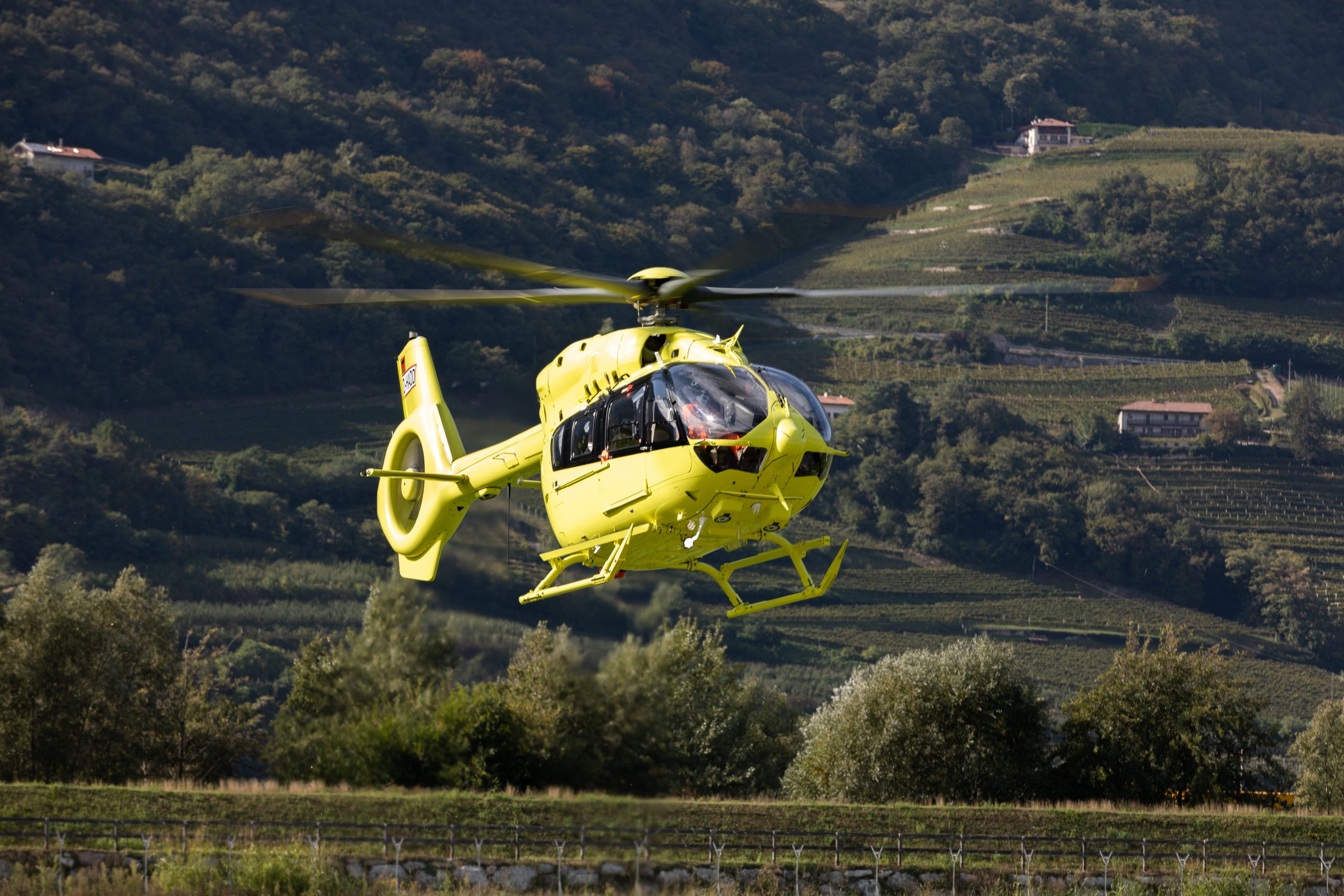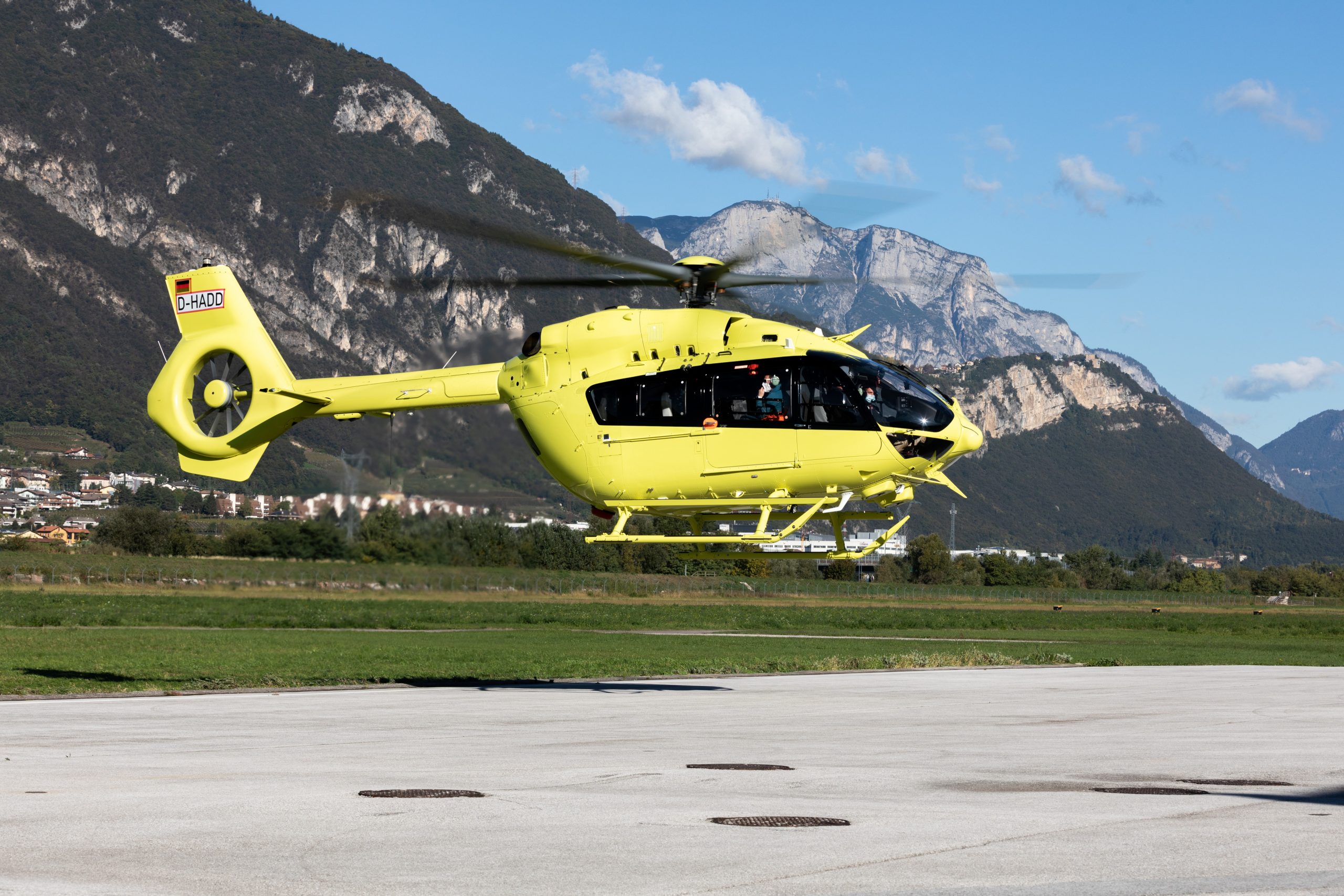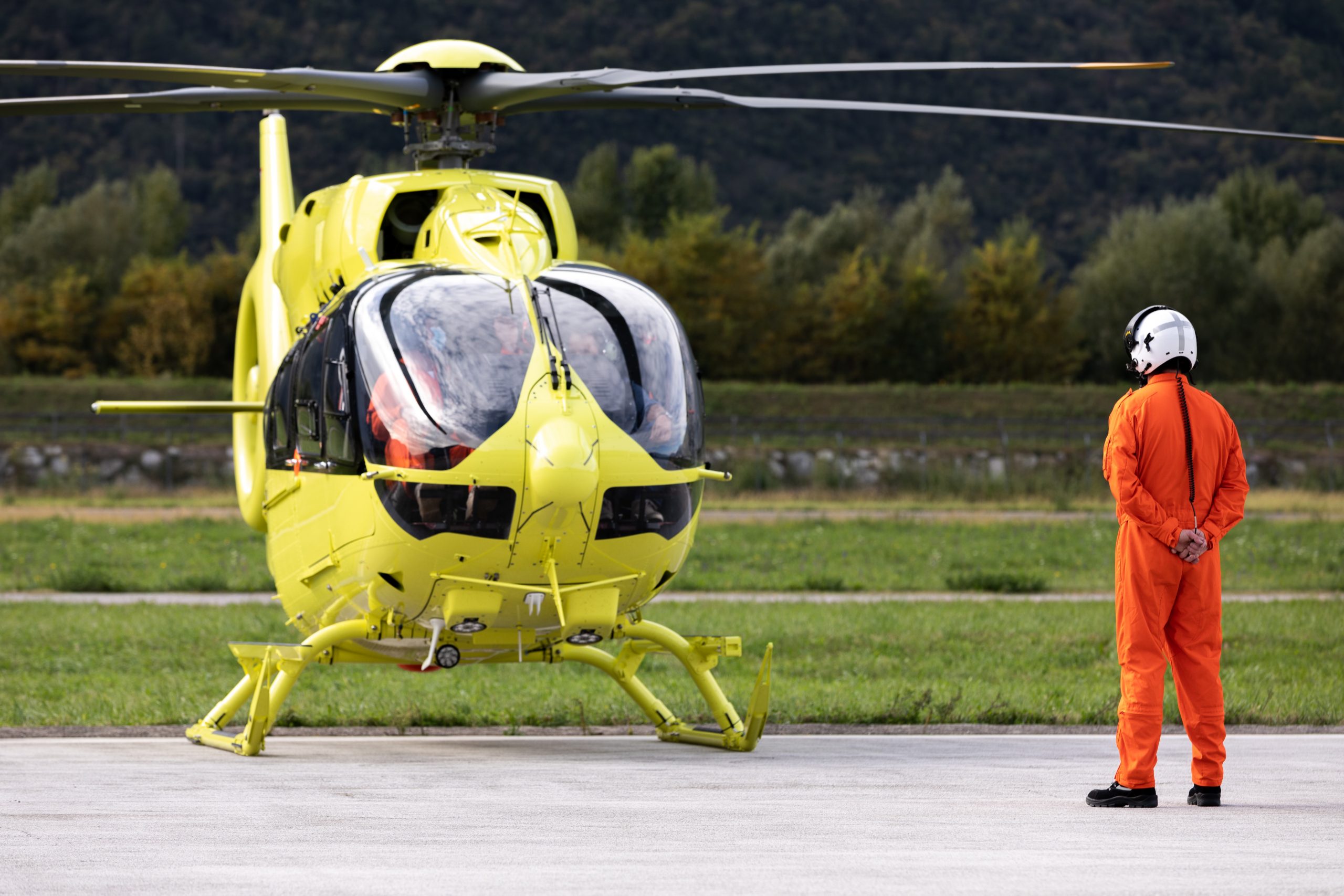
HEMS, learn about the features of the Airbus H145 and discover what makes it unique for helicopter rescue
The H145 is the most advanced helicopter in Airbus Helicopters’ multi-purpose twin-engine category, with a combined total of over 5 million flight hours and more than 1,300 helicopters in service worldwide
Compact in size, the H145’s large and flexible cabin reconfiguration and powerful engines make the helicopter ideal for various civil missions, most notably helicopter rescue.
Airbus H145 features
Airbus Helicopters’ new Helionix avionics suite provides undisputed superiority for in-flight safety, pilot assistance and situational awareness – resulting in unprecedented levels of flight safety.
Featuring the most advanced dual-duplex four-axis autopilot, it offers high flight stability and precision, unique flight envelope and over-limit protection, automatic take-off and fully coupled approaches for hovering.
It also provides increased safety, in-flight and on the ground, thanks to a new modern and powerful engine with a two-channel Full Authority Digital Engine Control Unit, Fenestron tail rotor, innovative man-machine interface, 4-axis autopilot, compact external design and 360-degree approachability; excellent field of view for the pilot.
The new H145 includes several new features that will allow operators to improve their operations:
- An innovative hinge-less, bearing-less pentapalm rotor that increases the payload by 150 kg, further improving the helicopter’s mission capabilities. This new rotor also improves crew and passenger comfort, making the ride much smoother. Other benefits include a reduced D-value, allowing the H145 to operate in tighter areas, simplified maintenance and a higher availability rate.
- Increased connectivity that harnesses the value of data for safer and more efficient operations. The wireless aerial communication system (wACS), that has been installed, will allow customers to exchange data seamlessly. Real-time monitoring of helicopter systems is enhanced by the secure transmission of helicopter and mission data.
Customers can choose to retrofit their previous H145 with the new rotor system and take full advantage of the increased payload and simplified maintenance.
Main Airbus H145 missions
- HEMS: It is in effect an ideal helicopter for performing emergency medical missions due to its low noise level – especially when operating over cities and landing in hospitals. Thank its main rotor and Fenestron tail rotor, patients can be easily loaded and unloaded from the helicopter side or rear even when the rotors are in operation. In addition, the H145 offers excellent ergonomics for doctors and crew (e.g. loading heights, cabin with EMS concept). The two large rear clamshell doors allow patients to be loaded quickly, easily and safely. In addition, the spacious and unobstructed cabin allows all the necessary life-saving medical care for patients during the flight.
- Aerial work at offshore wind turbines: The H145’s power reserves allow this helicopter to perform a variety of aerial work, including reaching offshore wind farms. As wind farms are located further and further offshore, the lifting and hovering performance provided by the H145 is needed. Despite a large and spacious cabin, the main rotor has a very small diameter, making it perfectly suited to approaching wind turbines.
- Public safety: the H145 is always ready for duty as a fast and reliable helicopter that can quickly transport up to 11 officers to the scene. Main roles include patrol, surveillance and rescue missions. It offers a wide range of advanced equipment to facilitate multi-role capabilities in police missions. The helicopter is supported by the installation of infrared and daylight cameras, controlled by an operator who also manages communications and data exchange with police resources on the ground.
Important dates
– June 2010: First flight of the H145 (BK117 D2)
– April 2014: EASA certifies the H145
– July 2014: Entry into service of the H145
– March 2019: The new H145 five-blade is unveiled at HAI
– September 2019: The H145 pentapala is the first twin-engine aircraft to land on Aconcagua
– June 2020: The H145 pentapala receives EASA certification.
– September 2020: Delivery of the first H145 pentapala to the Norwegian HEMS operator Stiftelsen Norsk Luftambulanse.
– May 2021: First pentapala retrofit on an H145 is performed.
H145 technical specifications
Maximum take-off weight: 3,800 kg
Payload: 1,905 kg
Engine: Two Safran Arriel 2E turboshaft engines
Two pilots and up to ten passengers
Performance
Maximum cruising speed (VNE) with MTOW at ISA/1,500 ft: 140 kts
Maximum lift: 349 Nm with standard fuel tank, 438 Nm with an auxiliary tank
Maximum endurance: 3h31 with a standard tank.
H145 Infographics- ITALIAN (1)Read Also:
The New Airbus H145 Climb The Aconcagua Mountain, 6,962m A.L.S.
Airbus Helicopters Sets A New Milestone Of Quality And Experience For The Italian HEMS Market
HEMS In USA: Global Medical Response Orders 21 New Airbus Helicopters





